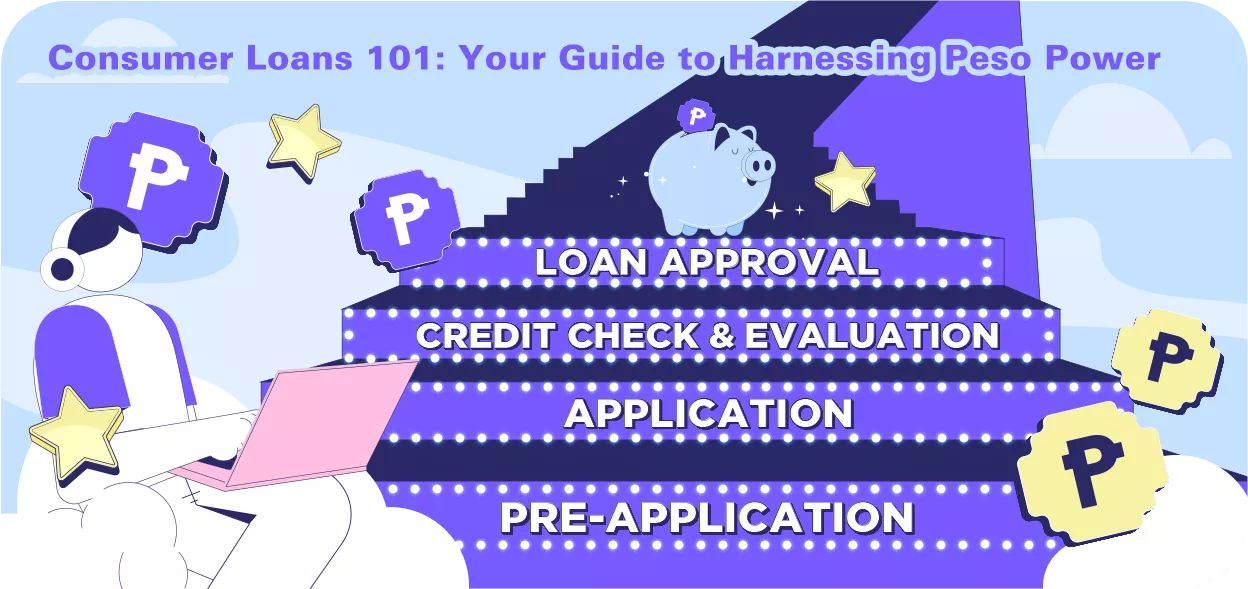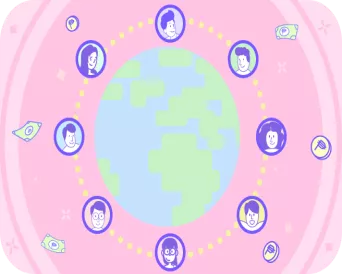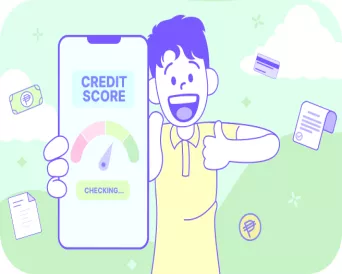Here’s something you might not know: You can achieve financial freedom here in the Philippines. That’s right, luv. It is very possible for you to reach your financial goals in the Philippines, no matter how turbulent our economy seems to be.
The key to unlocking financial freedom in the Philippines (or any country for that matter) lies in understanding the power of our currency. In other words, you need to fully be aware of the power your peso holds. And one way to do that is to understand the consumer loan space here in the Philippines.
You see, the dynamic and diverse landscape of the Philippines' consumer loan market caters to the diverse needs of Filipinos. It is, therefore, important that you stay knowledgeable about how consumer loans work to maximize the full potential of your peso.
And of course, this is where we come in, luv. This serves as a comprehensive guide that will help you unravel the complexities of the consumer loan segment of the Philippines, to empower you to prosperity.
Table of Contents
- What are Consumer Loans?
- Types of Consumer Loans in the Philippines
- Features of Consumer Loans
- Eligibility Criteria for Consumer Loans in the Philippines
- Application Process for Consumer Loans in the Philippines
- Consumer Loan Providers in the Philippines
- Regulations Governing Consumer Loans
- Risks and Responsibilities You Need to Know Before Applying for a Consumer Loan
- Avoiding Insolvency
- Conclusion

TOC
What are Consumer Loans?
Before anything else, let’s first understand what consumer loans are.
Consumer loans are like a financial toolkit designed just for you. They come in various forms, each tailored to meet different needs. Need to cover an unexpected expense? There's a loan for that. Dreaming of cruising in your brand-new car? There's a loan for that too! Want to turn that dream home into a reality? You guessed it—there's a loan for homeownership as well.
In a nutshell, consumer loans are your financial sidekicks, offering you the flexibility to manage life's twists and turns. They're not just about borrowing money; they're about providing solutions that fit your lifestyle, whether it's for a personal project, a long-awaited purchase, or handling the unexpected.
TOC
Types of Consumer Loans in the Philippines
1. Personal Loans
Life is full of surprises, right? That's where personal loans come in handy. These consumer loans are the most flexible in terms of providing funds for various reasons. Need to cover a medical bill, plan a special event, or embark on a spontaneous adventure? Personal loans got your back.
Pro tip: Did you know? There’s even a personal loan that can help you achieve your life goals faster. It’s called Quick Loan. Learn more about it here.
2. Auto Loans
Got your eyes on a shiny new car? Auto loans are your ticket to making that dream a reality. This type of consumer loan offers options to fit different budgets and preferences. Whether you're into fuel-efficient sedans, sturdy SUVs, or something in between, auto loans get you behind the wheel without breaking the bank.
3. Home Loans
Owning a home is a big deal, and home loans make it happen. This consumer loan type has a specific loan purpose: help you purchase, renovate, or flip a home.
4. Credit Card Loans
It's a convenient way to borrow money from your credit card issuer, providing a financial safety net for unexpected expenses. Just like a regular purchase, but with a few extra considerations, credit card loans can be a handy tool when used responsibly.
Keep in mind the interest rates, potential fees, and the impact on your credit score. They're great for short-term needs but are most effective when approached with a clear understanding of the terms.
5. Payday Loans
Payday loans are short-term loans designed to tide you over until your next paycheck. When unexpected expenses pop up, these consumer loans act as a rapid financial solution. Typically, you borrow a small amount and repay it, along with fees, on your next payday.
While they provide immediate relief, it's crucial to use them responsibly, luv. Their convenience is unmatched, but the key is to understand the terms, manage repayments wisely, and consider them for short-term financial needs.
Appliance/Product Installment Loans
Imagine wanting that cool gadget or a shiny new appliance, but the upfront cost feels hefty. That's where installment loans step in. These loans break down the big-ticket price into bite-sized pieces. It's like a budget-friendly plan where you can enjoy your purchase immediately and pay for it over time. From a new TV to a kitchen appliance, installment loans make acquiring significant products more wallet-friendly. As you explore this option, consider interest rates, repayment plans, and choose what suits your budget. They're your go-to for turning those major purchases into affordable, gradual investments.
Pro tip: If you’re looking for the lowest monthly payments for your next gadget or appliance purchase, try out our Shop Installment Loan.
Remember that you don’t have to stress about paying that much-needed appliance now when you can pay later.
TOC
Features of Consumer Loans
Loan Amounts and Terms
- Microloans to Substantial Amounts: Consumer loans come in various sizes, ranging from small microloans to substantial amounts depending on the lender and the borrower's creditworthiness.
- Terms: Loan terms refer to the duration for which the borrower or debtor is obligated to repay the loan. These can vary widely, from short-term loans with quick repayment periods to long-term loans that extend over several years.
Interest Rates and Fees
- Interest Rates: The interest rate is the cost of borrowing and is typically expressed as an annual percentage rate (APR). Understanding the interest rate is crucial as it directly affects the total amount you'll repay.
- Fees: Various fees may be associated with consumer loans, such as:
- Loan Origination Fee: Loan origination fee is a fee charged by your lender for processing a new loan application
- Late Payment Fee: This is charged to you for not paying your loan repayments on time.
- Prepayment Penalty: This is a fee imposed to borrowers for paying their loan before the agreed upon schedule. Not all lenders charge a prepayment penalty fee. So be ready to discuss this with your lender before signing any document.
Repayment Schedules
- Flexible Repayment: Some loans offer flexibility in repayment schedules, allowing borrowers to choose between monthly, bi-monthly, or other repayment frequencies. Understanding and selecting a repayment schedule that aligns with your income and budget is vital. Knowing the repayment schedule helps in financial planning, ensuring that you can meet your obligations without putting undue stress on your finances.
Secured vs. Unsecured Loans
- Secured Loans: These loans are backed by collateral, such as a car or property. If the debtor fails to repay, the lender can seize the collateral to cover the outstanding amount. Secured loans often have lower interest rates.
- Unsecured Loans: These loans do not require collateral. They are granted based on the borrower's creditworthiness and may have higher interest rates. However, they don't pose a direct risk to assets if the borrower defaults.
TOC
Eligibility Criteria for Consumer Loans in the Philippines
Ensuring loan approval involves meeting specific eligibility criteria. Let's break down the key requirements and considerations that lenders assess.
Age and Citizenship Requirements
- Age: Most financial institutions in the Philippines have a minimum age requirement for loan applicants. Typically, individuals must be at least 21 years old to apply for a consumer loan. Some institutions may have a higher age requirement, especially for certain types of loans.
- Citizenship: Applicants are usually required to be Filipino citizens. Non-Filipino citizens may have different eligibility criteria, and they might need to provide additional documentation, such as a permanent resident visa.
Employment and Income Verification
- Employment Status: Lenders often require loan applicants to be employed or to have a stable and verifiable source of income. This ensures that borrowers have the financial means to repay the loan. Some lenders may have specific requirements regarding the length of employment or stability of income.
- Income Verification: Applicants need to provide proof of income, which may include recent pay stubs, income tax returns, or other relevant documents. This helps lenders assess the borrower's ability to meet monthly repayment obligations.
Credit History and Credit Score Implications
- Credit History: Lenders assess an applicant's credit history to determine their creditworthiness. A positive credit history, indicating responsible credit management and timely repayments, enhances the chances of loan approval.
- Credit Score: While credit scoring is not as prevalent in the Philippines as in some other countries, some lenders may use credit scoring models to evaluate the risk associated with a borrower. A higher credit score often translates to better loan terms and higher approval chances.
Collateral Requirements for Secured Loans
- Secured Loans: Common types of collateral include real estate, vehicles, or other valuable assets. The value of the collateral can influence the loan amount and terms.
- Evaluation of Collateral: Lenders assess the value and marketability of the proposed collateral. This evaluation helps determine the maximum loan amount that can be offered and provides a fallback option for the lender in case of default.
TOC
Application Process for Consumer Loans in the Philippines

Documentation Needed for Loan Applications:
- Identification Documents: Applicants typically need to provide valid identification, such as a government-issued ID, to establish their identity.
- Proof of Income: Lenders often require documents like pay stubs, income tax returns, or certificates of employment to verify the applicant's income and assess their ability to repay the loan.
- Residence Proof: Some lenders may request proof of residence, such as utility bills or rental agreements, to confirm the applicant's address.
- Collateral Documents: If the loan is secured, documents related to the collateral, such as property titles or vehicle registration, may be necessary.
Steps in Applying for a Consumer Loan:
- Pre-Application Research: Before applying, it's advisable to research and compare loan options from different financial institutions to find the most suitable terms. It’s also good to check if you are qualified for a pre-approved loan to streamline the process. A pre-approved loan is a loan offered to those who meet a lender’s certain criteria.
- Submit Application: Once a suitable lender is identified, applicants can submit their loan application along with the required documentation.
- Credit Check and Evaluation: Lenders conduct a credit check and evaluate the applicant's financial information to assess creditworthiness. Your application also goes through underwriting, which is when lenders review the risks involved in lending you money. If you pass, then you’ll definitely get approved, luv!
- Approval or Rejection: Based on the evaluation, the lender will either approve or reject the loan application.
Approval and Disbursement Process:
- Loan Approval: If the application is approved, the lender will provide you with the details of the approved loan amount, interest rates, and repayment terms.
- Signing the Credit Agreement: You will then be required to sign a credit agreement, outlining the terms and conditions of the loan.
- Disbursement of Funds: Upon agreement, the funds are disbursed either through a bank transfer or a check.
Common Reasons for Loan Rejection:
- Poor Credit History: A history of late payments, defaults, or a low credit score can result in rejection.
- Insufficient Income: If the lender determines that your income is not sufficient to cover the loan repayments, the application may be rejected.
- Incomplete Documentation: Failure to provide all necessary documents or submitting inaccurate information can lead to rejection.
- High Debt-to-Income Ratio: If the your existing debts are too high in proportion to their income, it may be deemed a risk factor.
Understanding the application process and ensuring that all required documentation is accurate and complete can improve the likelihood of loan approval. It's essential to be aware of potential reasons for rejection and take steps to address them before applying for a consumer loan.
TOC
Consumer Loan Providers in the Philippines:
- Commercial Banks: Commercial banks are traditional financial institutions that offer a wide range of financial services, including consumer loans. They often provide various loan products, such as personal loans and housing loans. Commercial banks typically offer stability, established reputations, and a variety of loan options.
- Government Financial Institutions: These are financial institutions that are either fully or partially owned by the government. In the Philippines, institutions like the Development Bank of the Philippines (DBP) and Land Bank of the Philippines are examples. Government financial institutions often play a role in promoting economic development and providing financial assistance to specific sectors.
- Private Lending Companies: Private lending companies are non-bank entities that specialize in providing various loan products to individuals. They may offer more flexible terms but might have higher interest rates compared to banks. Private lending companies may have a quicker application and approval process.
- Online Lending Platforms: With the rise of financial technology, online lending platforms have become popular. These platforms facilitate loan transactions through online applications, providing convenience to borrowers. Online platforms often boast quick processing times, and some cater to borrowers with limited credit history.
TOC
Regulations Governing Consumer Loans:
- Role of the Bangko Sentral ng Pilipinas (BSP): The BSP is the central bank of the Philippines and oversees the country's monetary and banking system. It sets policies and regulations to ensure the stability of the financial sector. The BSP establishes guidelines to protect consumers in financial transactions and ensures fair lending practices.
- Consumer Protection Laws: These laws safeguard the rights and interests of consumers. In the Philippines, the Consumer Act of the Philippines provides a framework for consumer protection.
- Usury Laws and Interest Rate Caps: Usury laws set maximum interest rates that lenders can charge. These laws protect borrowers from excessive interest rates. The BSP may impose interest rate ceilings for certain types of loans.
- Transparency and Disclosure Requirements: Lenders are required to provide clear and comprehensive information about loan terms, interest rates, fees, and other charges. This ensures that borrowers have a complete understanding of the loan agreement.
TOC
Risks and Responsibilities You Need to Know Before Applying for a Consumer Loan
- Understanding the Debt Burden: Be sure to assess your ability to repay before taking on a loan. Understanding the total debt burden, including existing debts, is crucial.
- Managing Loan Repayments: Responsible financial management involves budgeting for loan repayments. Timely payments positively impact credit history and avoid late fees.
- Consequences of Default: Defaulting on a loan can have severe consequences, including damage to credit scores, legal actions, and the potential loss of collateral for secured loans.
- Avoiding Predatory Lending Practices: You should be cautious of lenders engaging in predatory practices, such as hidden fees, excessively high interest rates, or misleading terms.
- Importance of Financial Literacy in Borrowing: Financial literacy is crucial for making informed borrowing decisions. Understanding terms, interest rates, and the overall loan agreement empowers you to make sound financial choices.
TOC
Avoiding Insolvency
Before we dive into the nuts and bolts of applying for loans and choosing the best ones, let me give you a warning: Stay away from insolvency. It's a word that might sound heavy, but understanding it can be a game changer in your financial journey.
Insolvency happens when you can't keep up with your debts as they come due. It's like being underwater financially – you might have assets, but they're not liquid enough to cover your obligations when they're due. This is exactly what lenders want to avoid, and you should too. It's about making sure you're not biting off more than you can chew with a loan that looks appealing today but could strain your finances tomorrow.
This doesn't mean you should shy away from loans altogether. Instead, it's about making informed choices. Whether you're eyeing a personal loan for that dream project or considering a home loan to plant your roots, know your limits first. Strike a balance so you can use borrowing to empower your financial growth.
TOC
Take Control of Your Finances, Luv
Armed with knowledge, you're now better equipped to navigate the world of consumer loans in the Philippines. Remember, responsible borrowing is the key to unlocking a future of financial freedom. Take control of your financial health with informed decisions and strategic planning that will unlock your life goals. Your journey to financial empowerment starts now.






